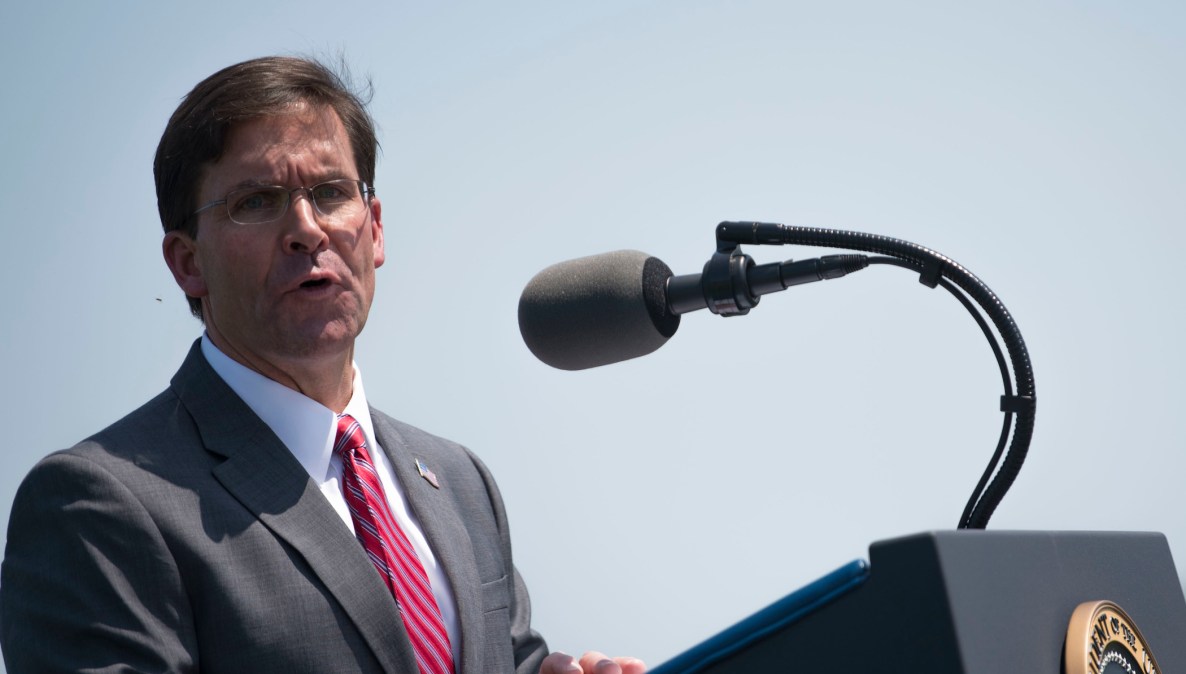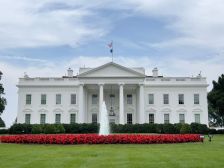Esper takes aim at DOD ‘culture,’ risk aversion

Secretary of Defense Mark Esper is targeting the Defense Department’s culture of risk aversion as he aims to spark innovation and private-sector partnerships in the acquisition of emerging technology.
“DOD needs to be able to take risks and accept failure,” he said at a Center for Strategic and International Studies event Friday. “The hardest part is culture, that will take time.”
Acquisition reform has long been pilloried by leaders in the military and Congress alike. As Esper took his turn scolding the department’s slow pace of onboarding and developing new technology, he said the need for change is critical to national security. The U.S. needs to be faster in developing technology, especially with artificial intelligence, 5G and hypersonic missiles than its competitors around the world, he said, pointing to China as the U.S.’s No. 1 “strategic competitor” and calling out the country’s history of theft of military technology.
It was not all doom and gloom from the secretary: some $5 billion dollars has been saved from disinvesting in legacy systems and reforming the so-called Fourth Estate, or DOD support agencies. That cash is being re-invested into developing new technologies, Esper said.
“We have to make that leap,” he said of modernizing legacy equipment.
Part of building a more agile military was standing up the new Space Force, which had its Star Trek look-a-like logo revealed recently. The new force will be an opportunity for the military to be “fast followers” of the private sector and develop its own technologies, Esper said.
Esper also noted he has routine conversations with top CEOs about improving technology development that can be used in the department.
Gaps in tech governance
Outside experts followed Esper’s remarks Friday with their assessment of the current governance of emerging technology, following a recently released CSIS report on the topic, which found several areas of improvement for the government.
The report highlighted gaps around a “decentralized” governance structure of emerging technology. The government needs to identify “must-win” technologies that are critical to national security, the report noted, and find ways to best leverage the strength of each sector in that technologies’ development.
Agencies beyond the DOD will be critical to that, experts added, championing organizations like the National Institute for Standards and Technology. But NIST “is severely under-resourced to perform that mission,” according to Jason Matheny, founding director of Georgetown’s Center for Security and Emerging Technology.
Other panelists stressed a need to rebalance how the government works with the private sector on new tech.
Suzanne Spaulding, senior adviser for homeland security at CSIS’s International Security Program, said the government should figure out who is best positioned to establish “comparative advantage” on an issue, then figure out who should pay for it. For example, in securing the private sector from nation-state sponsored cyberattacks, the companies themselves are closest to the threat and best positioned to defend themselves.
Other governance gaps center on public-private development, information sharing and the lack of commercial incentives. New technology needs new incentive structures and continued commitments to basic research on which innovation is founded, the panelists echoed from the report.
Matheny noted the human aspect of developing emerging technology. The immigration of high-skilled researchers is still key, he said.
“The U.S. depends on high-skilled immigration to attract and retain the world’s best talent in science and engineering,” Matheny said.






